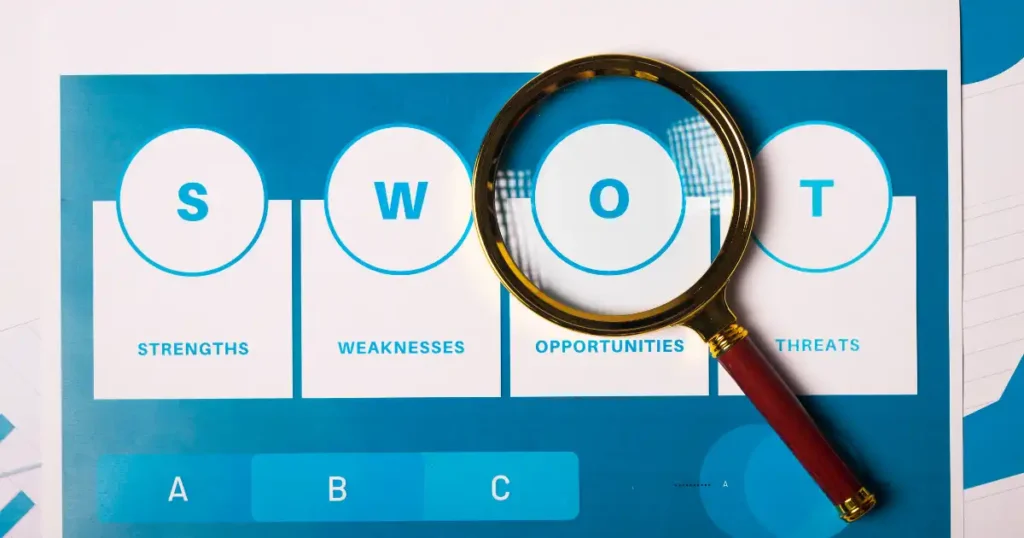Table of Contents
Conducting effective root cause analysis is not as simple as identifying a problem and landing on a potential root cause. It is not as simple as deploying a root cause analysis tool such as a Fishbone Diagram or Drill Down Tool. It is not as simple as delivering the most popular solution among your peers. There is more to the process, and more you can do to ensure its successful conclusion.
One of the ways in which you can increase your chance of the successful delivery of root cause analysis is by deploying it within workshop format. This tried and tested format can be used in multiple ways and at multiple times of the root cause analysis process to identify problems, potential root causes, potential solutions and controls. They can be used to gain knowledge, insight and understanding that may not have been there at the start.
So how do you go about deploying a root cause analysis workshop which guarantees the outputs you want? Stay tuned…
What is a root cause analysis workshop?
A workshop of this kind is defined as follows:
Root Cause Analysis Workshop is “A group meeting or effort where the sole purpose of the session is to leave with the root cause of current problem(s) faced identified and well defined”.
The workshop will be about bringing together the right people, those who have knowledge of the problem and the process in question. These people will use the workshop as an open forum to have a discussion about the problem(s) they have been facing and seek to understand collectively why these have been occurring.
We refer to this session as a workshop as we are actively working through a range of ideas, topics for discussion and potential root causes, all with the aim of whittling these down to one final actual cause. This is an effort that cannot simply be done through a quick chat or use of a tool, we need to work through not only the potential causes but also the competing views and ideas people may have.
To aid in this endeavour, you can use an array of root cause analysis tools or approaches to structure your workshop and get the best out of it. To do so, you will need to be clear on the purpose of the workshop, the structure of the workshop and your own company needs.

Benefits of a root cause analysis workshop
Packaging this work up into a workshop format has its reasons, and the majority of these could be defined as being “benefits”. These benefits would include:
- The exchanging of ideas openly and collectively. This harbors a culture of collaboration and transparency, and ensure people feel as though they are being taken on the root cause analysis journey.
- Ideas can spur ideas. By avoiding conducting this work in silo, people’s creativity will be sparked and hearing the ideas of other people will give them inspiration they may not have received conducting this work alone.
- This format makes it easier to focus on a root cause tool. In these settings, having a root cause tool like the Fishbone Diagram or Drill Down Tool on a screen for all to see and contribute to makes the experience much more enriching.
- No crossed wires. Sometimes in these situations the messaging around what needs to be done, what the problem is and the aim of such work can get confused. By having everyone in the same room, receiving the same messaging at the same time removes this risk almost entirely.
- A lot of work can be done in a short amount of time. For the reasons just laid out, asking several individuals to do this work in silo for it to be collated and analyzed later will take a lot of time. By having everyone in one room over a 1 – 3 hour workshop, a lot time can be saved across this process.
In essence, the main benefit of conducting this type of work in workshop format is collaboration. Collaboration breeds consistently, coherence and a common purpose, and when it comes to solving and fixing your most critical problem’s root causes, these are critical.
Steps to deploy the workshop

Identify the problem
Be clear from the get go exactly what problem you are facing. This will include clearly defining the problem in full. To do this, you may need to have a series of conversations with those affected by the problem, leadership who want to see it removed and analyse any data available at this point. All of these activities combined will ensure you have a well-rounded, well defined problem which you can now attempt to tackle.
Gather the team
Next, you need to gather those people who have a vested interested in this work. Included in this team will be your SMEs (subject matter experts), those people who work the process on a regular basis and have had exposure to the problem. It should also include someone who has knowledge and experience of deploying a root cause analysis workshop (someone who has strong facilitation skills) and potentially other interested stakeholders who have been / may be affected by the problem. For these types of workshops, Managers are often excluded as their presence can stifle debate and conversation, especially among the more junior members of the team who may feel uncomfortable being completely honest about why they believe the problem has arisen in front of their Management.
Create & send agenda and workshop schedule
Next, you want to be clear about your expectations for the workshop. This will involve clear and concise communication between the individual organizing the workshop and those who will be taking part. As part of this effort, you will need to create a detailed agenda setting out the approach to be taken, the activities to be conducted within the workshop and you expectations for any preparation the team should make ahead of time. Send the agenda round before the workshop and attach it to the meeting invite so there can be no excuse for being unprepared.
Open the workshop
As the workshop opens, run through the agenda items and structure of the workshop that has been sent around. Ask if anyone has any questions or needs anything clarifying before the workshop officially begins. You will also state the rules of the workshop regarding things like letting everyone have their say, there are no wrong answers and looking at emails / mobile devices etc. You will also run through the goals and anticipated outputs of the workshop so everyone is clear what success looks like upon closure of the workshop.
Pull out the tool to be used
If you have decided to use a specific root cause analysis tool (and I would highly recommend you do) you now want to run through what the tool is and how to use this. Let’s say, for example, you decide to use the Fishbone Diagram. In this instance you should:
- Pull up a template of the tool on screen. Talk through the tool. What each part of the tool means, its purpose and the outcome you would want to see for each part.
- Talk through timings. How much time do you expect the team to work on X part of the tool, how much time will be allocated for each section etc.
- Pull up a completed example. This example would have all information populated and answers given. It could be something wildly different to what problem you are root causing (if you don’t want to place ideas in people’s heads) or it could be related – your call.
The aim here is to ensure everyone feels comfortable building out the tool in question, it reduces the need for questioning as you build out and increases the likelihood of hitting your desired output.
Openly discuss all potential root causes
Now you will work through your tool. This will involve you coming up with as many potential root causes as possible. It is a time for you to brainstorm and idea dump every possible root cause sitting in the minds of those who are attending the workshop. As you are running through this activity, the Facilitator of the session will be there to encourage openness and transparency, and ensure everyone is having their say. They won’t interject too much – they are there to support not lead. This activity will the continue on and on until the group collectively feel as though there are no more potential root causes available to identify for this specific problem.
Use another tool / discuss to get to the actual root cause(s)
Now that you have all potential root causes in front of you, it is time to whittle these down to the actual causes. This activity would take place after a much needed break, giving people time to digest the potential causes highlighted. For this activity, you would often use another tool, like the 5 Whys Diagram or Drill Down Tool to get to your final actual root cause. To begin whittling these down, you would as a group collectively agree which potential root causes are most likely to be incorrect or not relevant at this stage. These may be some of the more obvious ones which you could strike off right away. You would then collectively agree which of the top 5 potential root causes you think are the most likely, and take these forward to dive into further. The benefit of this activity, and using other tools to support such as the 5 Whys Diagram or Drill Down Tool is that you continue to explore the potential root cause more and more and more, increasing knowledge of this cause and giving you more insight from which you can make an informed decision. If, for any reason, you identify that the potential root causes you have brought forward may not actually be in scope after all, you can simply go back and bring forward another set of potential root causes to explore in more detail now.
Discuss the actual cause to confirm
At the end of the last stage, you should have a final, agreed root cause identified. Through the conversations had, the tools used and maybe even the data analyzed, you have confidently identified that this is your actual root cause. As a group, you can now begin to discuss this root cause in more detail, talking about where it has actually come from, what may have led to this and begin the dialogue around potential solutions.
Use an Affinity Diagram to come up with potential solutions
The next step is to brainstorm once again. This time, you will use the Affinity Diagram approach to complete this exercise. Here, we are looking to brainstorm all potential solutions that you could deploy to address the identified root cause. These solutions will be fixes that will ensure the problem being seen is removed / reduced, and that the effects seen from this problem go away completely. To conduct your Affinity Diagram exercise, you can simply dump all of your ideas down into one bucket to sift through at a later date. Equally you could categorize these during the workshop, focusing on process, people, procedures, technology etc. seeking to find solutions that comfortably fit within these categories. If you need to solve for a few areas, this also helps you to identify solutions that can straddle a range of different buckets. Remember, we are looking at potential solutions here, not agreeing exactly what will come next. Therefore, as with the root causing exercise, all ideas should be welcome.
Talk through the potential solutions to land on actual solutions to explore further
Similarly as was done with the identifying the actual root cause exercise, here you want to sift through all of the potential solutions identified and begin to whittle them down. To do this, you could use a solutions selection matrix. This is because it’ll often be the case that one solution is not enough to solve a problem that is sizeable and is impacting a number of areas, therefore you may need to take several solutions forward. Equally, your organization may put some criteria around the types of solutions you should seek to deploy, asking you to weigh them up by cost of delivery, impact on the business, time to deliver etc. All of these criteria would be used to come up with a score or rating, and those that positively satisfy each the most will be the solutions you take forward.
Close the workshop
To close the workshop, firstly you want to revisit what was set out in the agenda / approach section right at the start. Have you worked through that agenda and approach as anticipated? The goals and outcomes set out at the start, have they been achieved? Did people stick to the rules as expected? This activity just ensures you can wrap up your workshop successfully and feedback on the successful delivery of it. If you can confidently say all of these were indeed achieved, you should have the confidence to believe the solutions you have identified for your problem are indeed the right ones.
Conclusion
As you have seen from the process just laid out, delivering a successful root cause analysis workshop is not an ease feat. It is not as simple as pulling out a root cause tool or simply getting people into a room to start to discuss why something has gone wrong. The process as laid out works because it gives you and your participants confidence that no stone will be left unturned, you are using a tried and tested method that has proven itself time and time again and it ensures your organization’s best asset, its people, are at the forefront of this most important work.







